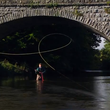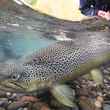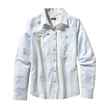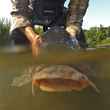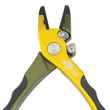There is a considerable amount of diversity in the world of wading boots. Simms alone has 10 different boot models for men, with other manufacturers also offering a mixed bag of options. And, although it might not seem like it at first glance, most of this diversity is meaningful. Rather than these models being differentiated by little more than purposeless bells and whistles or aesthetic differences, most of these boots have substantive differences in design that tailor them best to decidedly different purposes. As a result, most of these boots are tailored best to different anglers as well, dependent on what each angler seeks to accomplish with said boots.
None of this is to suggest that there aren't boots that can do it all. There most certainly are. In fact, most can. But some boots do some things better than others, as a result of how they've been designed. Some boots scream winter steelheading, with roomy foot boxes that will generously accept thick neoprene booties underlaid by a couple pairs of wool hiking socks. Others are built with guides in mind, where the durability demanded by what can sometimes be hundreds of days per year on the water trumps other design concerns such as shedding weight. Still others are built for the flats, where studdability, slip-protection and ankle support take a back seat to things like puncture resistance against shells and other hazards of the salt.




